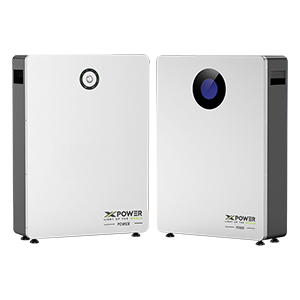您需要多少块太阳能电池?简单指南
发布时间:2024-06-11
因此,您已决定拥抱太阳能的力量,并准备进入太阳能加储能系统的世界。但在这之前,您可能会想,“我到底需要多少个太阳能电池?”不要害怕,因为我们会支持您!我们知道确定太阳能电池尺寸的过程可能看起来很吓人,但不要担心,因为我们将指导您完成一个简单的三步流程,让您像专业人士一样做出决定。
目录
步骤 1:为什么要安装太阳能电池?
让我们从基础开始——了解你为什么要涉足太阳能电池领域。难道只是为了拥有一个 备用电源 您是否希望在停电期间获得足够的电力供应?或者,您是否希望提高自用能力,摆脱电网的束缚?了解您的目标至关重要,因为它将为您日后做出明智的决策铺平道路。
第 2 步:了解影响存储大小的因素
如果您正在苦苦思索在确定存储系统的大小时需要考虑哪些因素,请不要担心,我们已经为您解答了。以下是需要考虑的几个关键因素:
1. 能源需求:深入了解您的历史能源消耗模式。检查您的平均每日能源消耗、峰值能源需求以及任何季节性变化。这些信息是估算您的电池应具备的储存能量的关键。
2. 自主性角度:停电期间,您希望太阳能电池保持灯亮多长时间?深入了解您的具体需求以及您所在地区停电的典型持续时间。
3. 效率很重要:花点时间思考一下你的 太阳能电池板、逆变器和电池。每个组件都有自己的效率等级,将这些因素考虑在内将为您更准确地估算您的存储需求铺平道路。
步骤 3:如何计算所需电池数量
现在您已经确定了目标,并且很好地掌握了影响存储大小的因素,是时候发挥您的数学能力了。以下是一种简化的方法,可帮助您破解密码并计算所需的电池数量:
1. 计算每日能量需求:将您每日平均能量消耗乘以所需的续航天数。这样便可得出您想要的总能量容量。
2. 放电深度:为了延长电池使用寿命,不应将其推到耗尽的边缘。计算存储需求时应考虑到这一点。例如,如果您需要 10 kWh 的可用能量,并且您的电池拥有 80% 的放电深度,那么您将需要一个容量为 12.5 kWh(10 kWh / 0.8)的电池组。
3. 分而治之:将所需的总能量容量除以单个电池的能量容量,即可得出所需的电池数量。例如,如果每个电池的容量为 2.5 kWh,则在上述情况下您需要 5 个电池(12.5 kWh/2.5 kWh)。
用蝴蝶结包裹起来
到目前为止,您已经勇敢地完成了三步电池尺寸指南。通过确定您的目的、分析影响存储大小的因素并施展一些数学魔法,您已经可以自信地决定您的太阳能电池需求了。
请记住,咨询经验丰富的太阳能安装人员或能源专家可以进一步完善您的决策。因此,掌握新知识后,请勇往直前,拥抱太阳的无限能量,开创更加可持续和可靠的能源未来。现在是时候掌控局面并做出明智的选择了!
关于作者:
欢迎!我很荣幸向大家介绍我们的品牌—— 电源,这本太阳能电池技术指南的作者。Xpower 在太阳能光伏 (PV) 行业拥有超过 15 年的经验,为我们提供丰富的知识和专业技能。
Xpower作为太阳能领域的制造商和出口商,通过多年的实践经验,我们见证了太阳能电池技术的发展及其对可再生能源格局的变革性影响。





